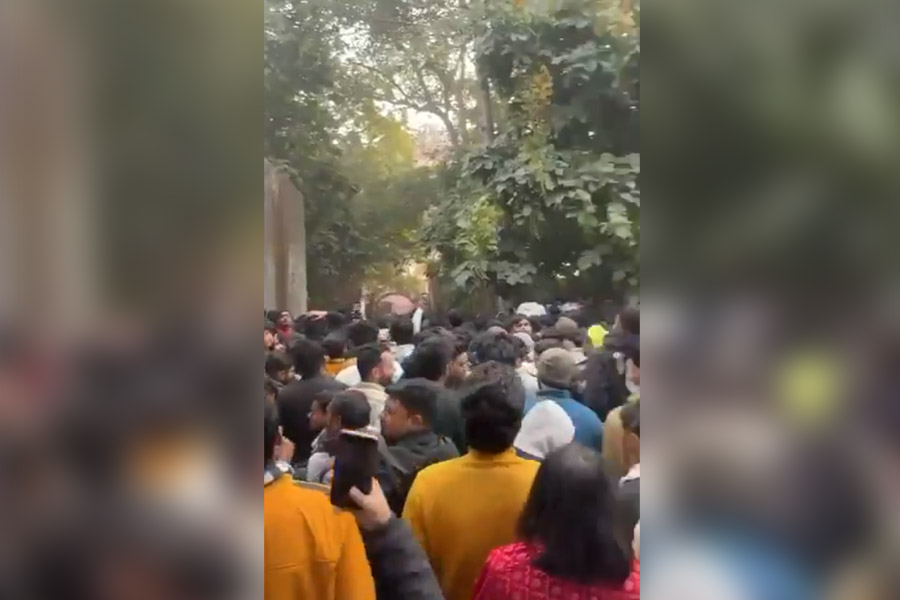The Sunderbans has caught the imagination of two Behala pujas this year.
At Behala Club, the theme Aranyak speaks of the human-tiger conflict and the survival of both in extreme climatic conditions. At Barisha Club, the theme Bashati emphasises the human endeavour to make settlements in these deltaic mangrove forests.
At Behala Club, the story begins with a wide panel of the Sunderbans map that marks out the rivers and creeks — such as the Matla, Bidyadhari, Raymangal and the Hadiabhanga — together with top shots of the topography.
Photographs of women in boats fishing and going about their daily tasks set the mood. Further on, there are enlarged photographs of paw prints of some adult tigers and some cubs, which are displayed with shots of the terrain they were found in.
A black and white photograph of a part of Bonbibi Johuranama, a play devoted to the forest deity, and portraits of tiger widows, tiger attack survivors with the weapons with which they slayed the predator, fisherwomen with their kantha work, a heap of crab shells that Sunderbans women risk their lives to catch… all these and more create the atmospherics till one reaches the deity who is clad in a gamcha sari with a mask in her hand.
Does the mask denote the masks worn by honey collectors over the back of their heads to ward off tigers?
Theme maker Pradip Das explains: “Durga is actually holding a mould of a face that depicts the transition of an ordinary woman to Durgatinashini. The women of the Sunderbans transform into such women of power when they save their husbands from the jaws of death or when they themselves ward off tiger attacks.”
Barisha Club’s Bashati focuses on man’s endeavours to tame the wild and make settlements in inhospitable terrains. At the entrance is a replica of Behala’s Sabarna Raychaudhury’s dwadosh mandir (12 temples), along with a giant hajack or lantern that has a tiger in a cage in its belly.
The explanation for this, as given by Animesh Chakraborty of Barisha Club: “Hajaks glow with power, so the tiger inside the hajack symbolises power.”
Thereafter, a temple modelled on the Kalighat temple draws attention because of the various monkeys perched at different levels that speak of human settlements, as do the extensive use of tiles as decoration pieces. Side panels give the history of the Behala-Barisha area.
“A tax called chonyar tax was imposed on the boats crossing the area,” said Chakraborty.
The panels also talk of the amount of tax that Sabarna Raychaudhury had paid to Nawab Alivardi Khan. A gun-holding image of Dakshin Ray speaks of the sway that local deities had over the populace. Durga is modelled on Goddess Chandi and the tiger, instead of the lion, is the bahan here.











